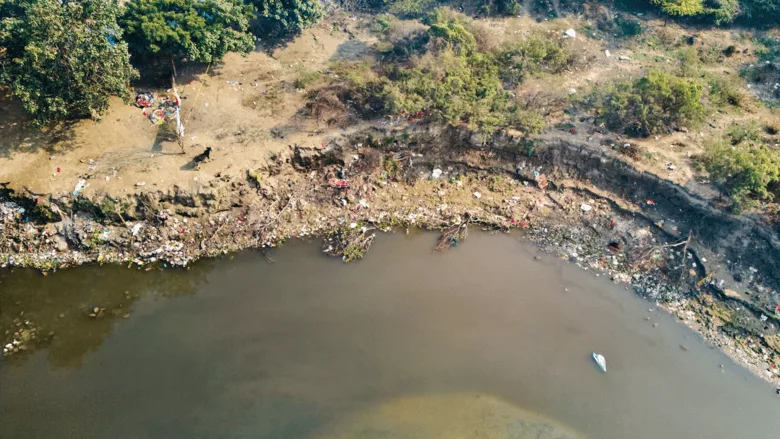EPA Stays the Course on PFAS Limits in Drinking Water
But Offers More Time for Compliance

Image via Shreshth Sharma from Corelens
The U.S. Environmental Protection Agency (EPA) announced it will keep its newly established limits for forever chemicals, aka PFOA and PFOS, in drinking water—but with a new twist: more time and flexibility for communities to meet the standards.
These substances, part of a larger group known as PFAS (Per- and Polyfluoroalkyl Substances), have been linked to health concerns and are notoriously hard to remove from the environment. But with the clock ticking toward a 2029 compliance deadline, small and rural water systems across the country voiced concerns: how could they afford to treat their water without sending costs sky-high for residents?
“We are on a path to uphold the agency’s nationwide standards to protect Americans from PFOA and PFOS in their water,” EPA Administrator Zeldin said. “At the same time, we will work to provide common-sense flexibility… This will support water systems across the country, including small systems in rural communities.”
What’s Changing?
While the legally enforceable levels for PFOA and PFOS (set in April 2024) will stay the same, the EPA now plans to:
- Extend the compliance deadline from 2029 to 2031.
- Launch a federal exemption framework for certain systems.
- Boost communication and technical support through a new program called PFAS OUTreach Initiative (or PFAS OUT).
This initiative is meant to help water utilities—especially in smaller towns—connect with EPA experts, funding programs, and treatment technology providers.
Why It Matters
Water utilities are what the EPA calls “passive receivers.” They don’t cause the contamination, but they’re responsible for dealing with it. And many small towns just don’t have the money or infrastructure to solve PFAS problems overnight. That’s why some leaders in the water industry are welcoming the change.
“This commonsense decision provides the additional time that water system managers need to identify affordable treatment technologies,” said Matthew Holmes, CEO of the National Rural Water Association.
“States and water systems are struggling with the timeframes,” added Alan Roberson, Executive Director of the Association of State Drinking Water Administrators. “EPA’s proposed extension... will address the number of systems that would be out of compliance in 2029.”
Beyond helping utilities comply, Zeldin made it clear: those responsible for PFAS pollution should foot the bill—not communities.
He reiterated EPA’s intent to use its enforcement powers and effluent guidelines to reduce how much PFAS gets into water systems in the first place.
“Drinking water systems are passive receivers of PFOA and PFOS,” Zeldin noted. “Polluters can contaminate the surface waters or aquifers these systems rely on.”
What’s Next?
EPA plans to formally propose the extended compliance rule this fall, with final action expected by Spring 2026. In the meantime, water systems can tap into free EPA technical assistance services (WaterTA), explore federal grants, and prepare their infrastructure for long-term upgrades.
EPA is also revisiting whether to regulate additional PFAS compounds like PFHxS, PFNA, GenX, and others. That process will take more time as the agency re-evaluates its legal authority under the Safe Drinking Water Act.
The EPA’s updated approach hopes to keep the pressure on polluters, protects drinking water, and gives communities the breathing room they need to catch up. It’s not a rollback—it’s a recalibration that aims to make public health goals realistic and fair for all.
Looking for a reprint of this article?
From high-res PDFs to custom plaques, order your copy today!





